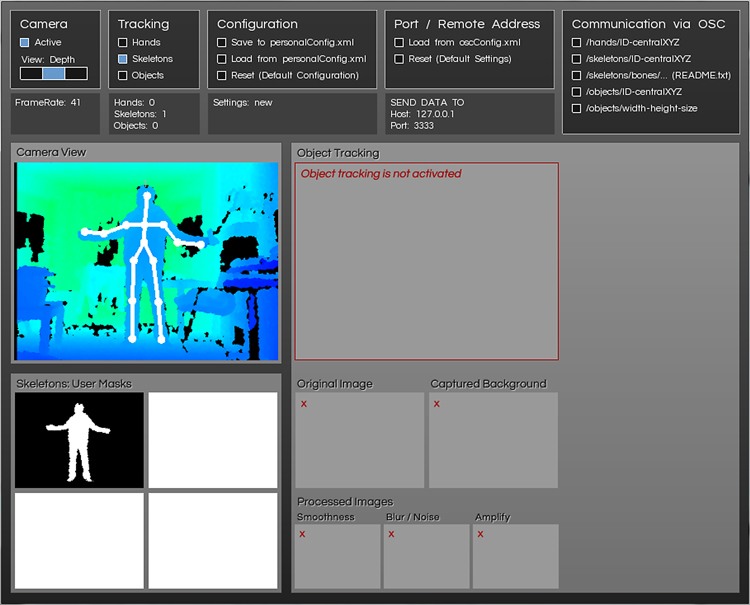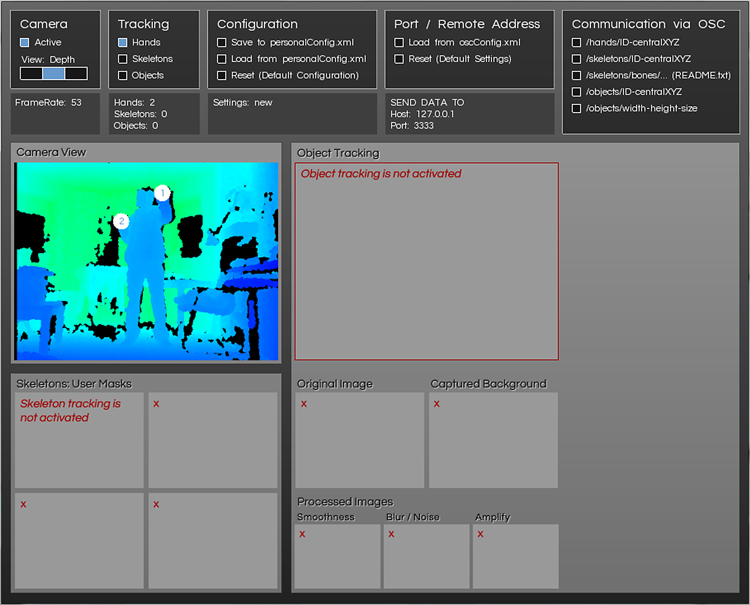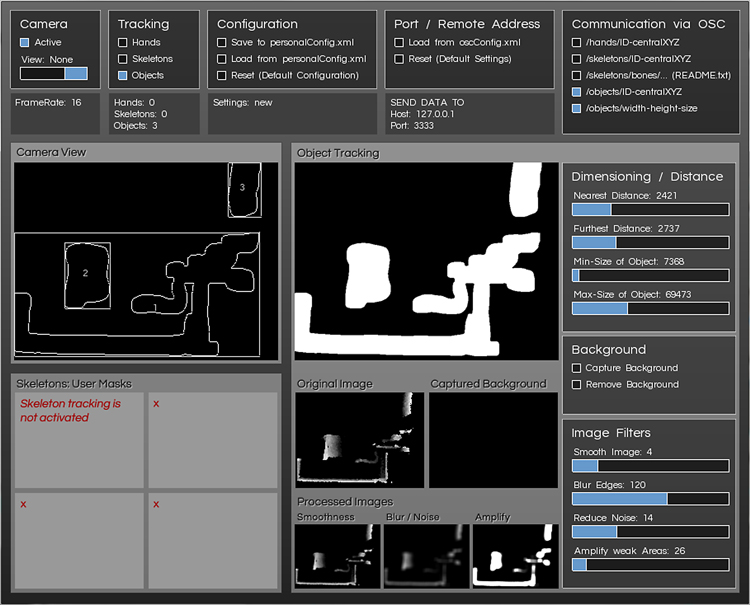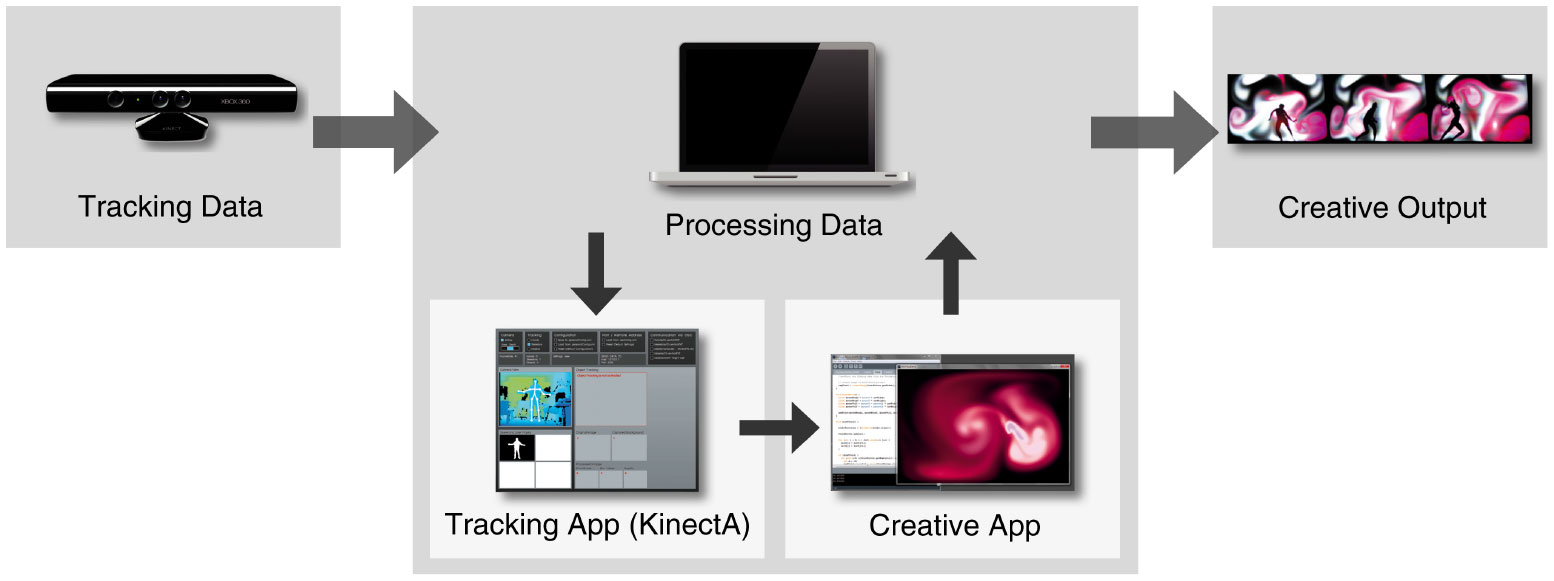A Kinect tracking application for Media Artists and Designers. Master Thesis, M.F.A., Media Art and Design, July 2012.
The Microsoft Kinect Sensor v01 has been released in the end of 2010. Many artists, coders, and designers then started to misuse this device for creative purposes beyond gaming applications. KinectA was the first software providing access to the camera depth data for people who were not able to program their own Kinect interface before.




KinectA has been built with openFrameworks. Hand and skeleton tracking base upon the ofxOpenNI wrapper (by Matthew Gingold). The features for object tracking are mainly based on the solution of KinectCoreVision (by Patricio González Vivo) and CommuntyCoreVision (by the NUI Group) with integrated workflow via the ofxOpenCv core add-on. Additionally, I have also included the calculation of three-dimensional data for the tracked objects. The interface has been designed with the ofxGui extension (by alphakana/ Stefan Kirch). The XML functionalities base on the ofxXmlSettings core add-on (by Lee Thomason) and the OSC communication has been built with the ofxOsc core add-on (by Damian Stewart).
KinectA is an application for motion tracking via Kinect Sensor – the first one that includes hand, skeleton and object tracking. This software has been developed for the needs of media artists and designers. It provides a clearly arranged interface with multiple configurations. Simple save and load functionalities are available for modifiable XML files. The tracked information can be send via OSC to other hard- and software. KinectA is freely available for Mac and Windows.
Download _ sourceforge.net/projects/kinecta
Source code _ github.com/mihoo/KinectTrackingApplication
Master Thesis _ M.F.A., Media Art and Design, submitted at Bauhaus-Universität Weimar, Germany, July 2012.
Supervision _ Jens Geelhaar and Michael Markert
Related publications
- Michaela Honauer. 2013. Designing Device-less Interaction A Tracking Framework for Media Art and Design. In Susanne Boll, Susanne Maaß, and Rainer Malaka (Eds.), Mensch & Computer 2013 – Workshopband. Oldenbourg Verlag, Munich, Germany, 535-538.
- Michaela Honauer and Jens Geelhaar. 2012. Designing Natural User Interfaces with Depth Sensing Technologies like the Kinect Sensor – A Tracking Framework for Artists and Designers. In Khaldoun Zreik and Robin Gareus (Eds.), PostDigital Art – Proceedings of the 3rd Computer Art Congress. Europia Productions, Paris, France, 69-74.